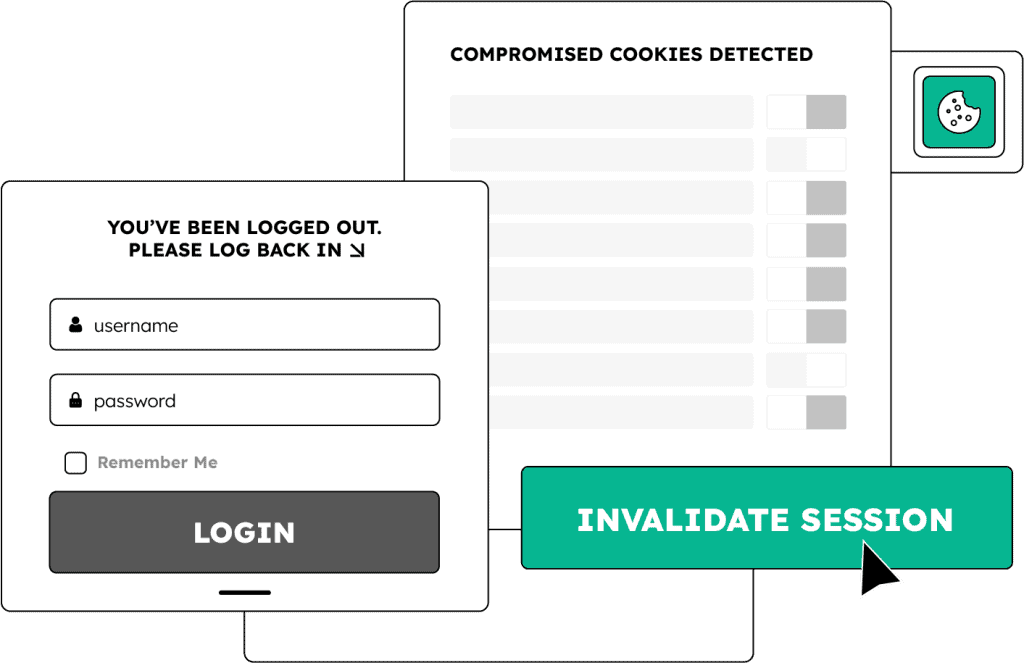USE CASE: SESSION HIJACKING PREVENTION
Stop Session Hijacking
at the Earliest Point of Exposure
Infostealer malware silently steals web session cookies, rendering MFA and passkeys useless. SpyCloud detects stolen session cookies tied to your customers or employees so you can terminate active sessions before attackers compromise them.

What criminals don't want you to know...
Stop session hijacking before it escalates
SpyCloud closes the blind spot left by traditional security tools by revealing when users’ active sessions are already in criminal hands – and helping you shut them down in time.
Invalidate session tokens and stop session-based ATO and ransomware threats in their tracks
EXPLORE PRODUCTS
Prevent criminals from abusing employee and customer cookies for illegitimate access
Stop criminals from using stolen session cookies to bypass MFA and impersonate employees in workforce SSO, email, and collaboration tools
Get early warning and detect compromised web sessions tied to customer logins before fraud or ATO occurs
Correlate session exposure with malware infections and take swift action to reset credentials and revoke tokens
EXPLORE WHO USES SPYCLOUD
Defenders
we help
Next steps
Take control of session hijacking before it escalates